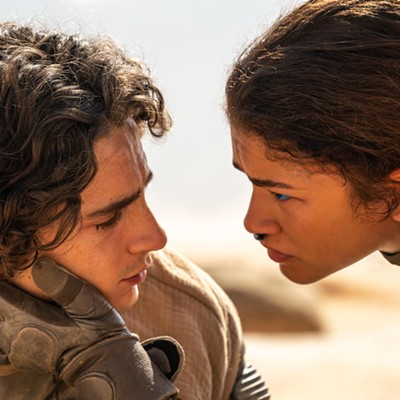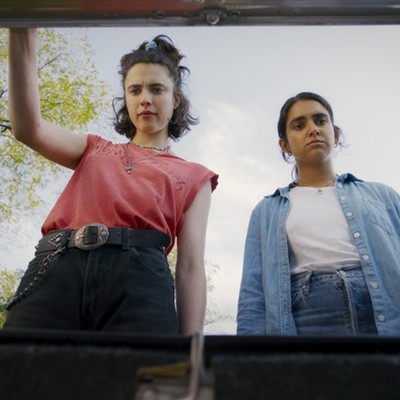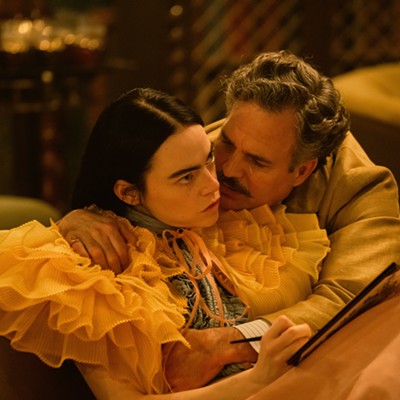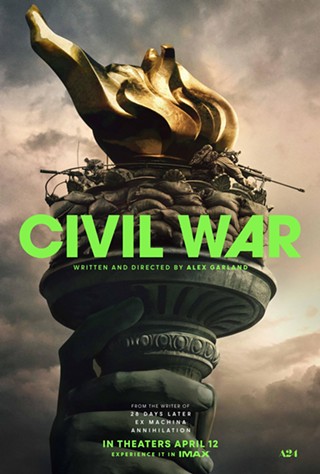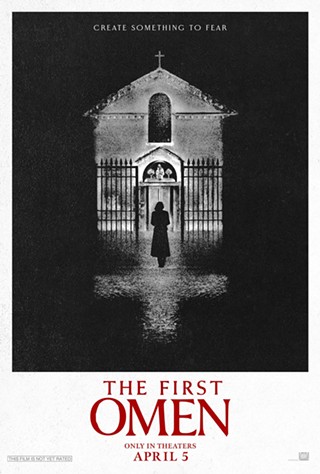However, as result, the total stock of feelings available to be exploited for cinematic purposes has run dangerously low. It's said that only 30 to 40 more films can be made about the feeling of embarrassment that occurs during farting before that artistic well runs dry.
Look Both Ways is interesting in that it mines the already well-mined area of feelings about death and love, but it does so, for the most part, in a way that's fresh enough to show that some of our feelings on these topics haven't already been permanently transformed into greeting-card bromides. Strangely, it does this by focusing on a woman whose job is illustrating greeting cards.
Meryl (Justine Clarke), the greeting-card artist in question, appears at the start of the film riding a train. As it enters a tunnel, the scene shifts seamlessly to a watercolor animation sequence of the train smashing into the tunnel wall.
Back to real life, we see Meryl walking away from the train as her imaginary watercolor world constantly intrudes, turning a car into a death-dealing monster and an innocent man into a murderer.
The animations are superb, and they get at an aspect of anxiety that is not well-treated in most films. While there have been an endless series of movies that psychoanalyze anxieties by finding their fictitious roots in childhood traumas and Freudian fables, it's much harder to show what an obsessive thought looks like. Look Both Ways is innovative in that it finds, using the techniques of experimental film, several ways to explore the horror that automatically accompanies being conscious.
While Meryl fixates on every possible kind of death, newspaper photographer Nick (William McInnes) recurrently thinks only of cancer. This is probably because he has just been diagnosed with cancer. Instead of cartoon images, Nick's inner life appears in two forms: microscopic close-ups of metastasizing cancer cells, and still-image montages.
The montages are gorgeous, rapidly fired series of snapshots that show Nick's life, his father's death from cancer and Nick's visions of himself as a future cancer patient.
Of course, just having two leads who are obsessed with death is not enough to make a film, so the two have to somehow meet and fall in love and make gentle sex noises together, or else it's not a movie so much as a potential theme-park ride at Six Flags Death Obsession.
What happens is that Meryl witnesses a man falling in front of a train and dying. Nick arrives to report on the story, and he and Meryl begin an odd relationship that takes place during a three-day weekend.
The film, though, doesn't just stick with Meryl and Nick. It also has a series of beautiful, wordless sequences in the life of the conductor who was driving the train that killed the man. This cut back and forth with scenes, also wordless, of the dead man's widow, and leads to an effective scene where the two meet.
If these two stories were the entirety of the film, Look Both Ways would be a masterpiece. It would also be about 57 minutes long. Unfortunately, people aren't satisfied with 57-minute films, so writer/director Sarah Watt tosses in two other stories, one about a divorced man who's just knocked up his girlfriend, and another about Nick's boss' efforts to quit smoking.
These two stories go nowhere and really drag the film down. Even the dialogue suffers in these scenes. Nick and Meryl have weird and interesting things to say that open up dark corners of our fearful psyches, but the other sequences are full of trite lines that seem to have come from the outtakes of Star Jones Reynolds' last appearance on The View.
Oh well. I don't expect perfection from films, and Look Both Ways has enough surprising, novel and enlightening moments that I don't really care that it could have been a lot better. Although, if you wanted to see a very similar concept in filmmaking done with far fewer flaws, you could rent Miranda July's Me and You and Everyone We Know, which also combines narrative romance with experimental techniques to get at untouched areas of inner (and outer) life.
But Look Both Ways has its own charms, and it has the tremendous benefit of being Australian. Although this means that the film has to be flipped upside down to be viewed in North America, it also shows that even a strange people who live as far away from us as anyone on Earth can still have the same emotional content as true Americans. I think that's an important lesson in this time when we're trying to decide whether or not it's OK to torture enemy combatants. See, if even a creature as strange as an Australian has feelings, then it seems likely that someone as like us as an enemy combatant does, too. So let's all hug, because if we all have feelings, then loving is OK.

